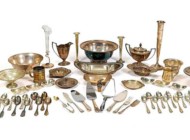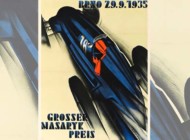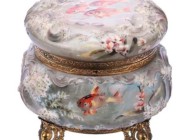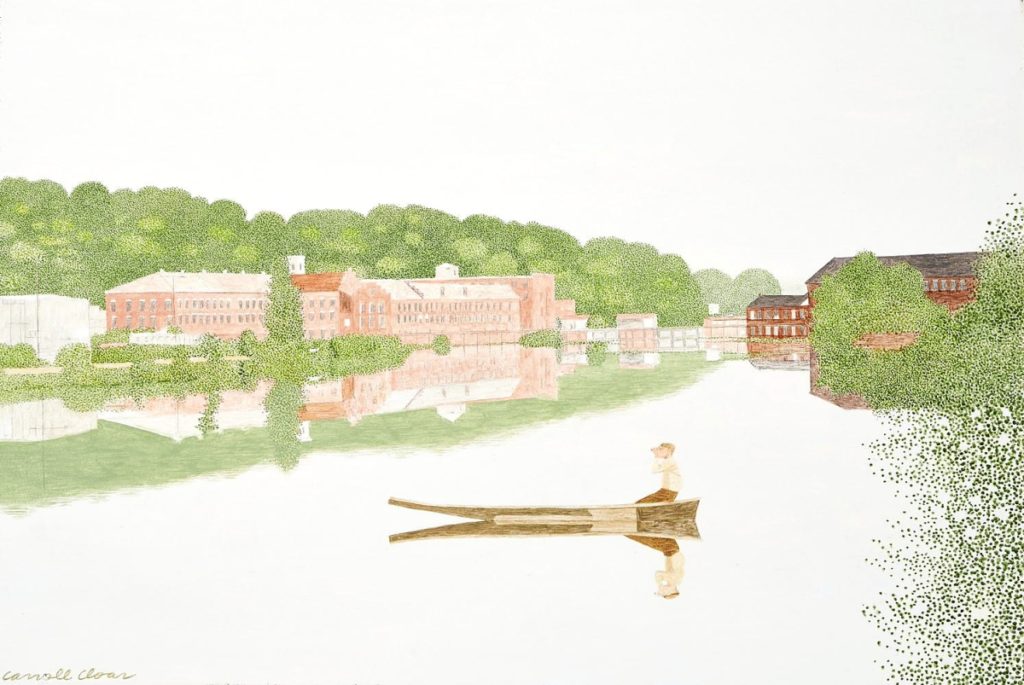
Sailing above expectations and bringing $51,240, the top price in the sale, was “The Explorer” by Carroll Cloar, acrylic on board, 23 by 34 inches, 1982 ($28/32,000).
Review by Madelia Hickman Ring, Photos Courtesy Case Auctions
KNOXVILLE, TENN. – “This sale emphasized the strength of fresh-to-the-market art, especially art by Southern and African American artists, which has always been one of our favorite categories here at Case. We’re hopeful these new records will encourage new discoveries and consignments of similar material, because there’s certainly an appetite out there for it!” Sarah Campbell Drury, Case Auctions’ vice president of fine and decorative arts happily shared after the firm’s Winter Fine Art and Antiques Auction, in which more than 1,200 lots were offered January 28-29. While Drury did not disclose a sale total, she confirmed the sell-through rate of more than 98 percent, claiming it “sold half a million dollars above the high estimate, with a lot of new bidders and what might have been a record number of bidders: at least 7,500 from more than 55 countries.”
Southern art was indeed in high demand, evidenced by the top two lots in the sale, both being by Southern artists. At the apex of the sale at $51,240 was Carroll Cloar’s (American / Tennessee / Arkansas, 1913-1993) “The Explorer,” which Drury confirmed would be staying in the South, sold to a buyer bidding in the room. The painting, done in 1982 in acrylic on board, had been in the collection of Judy and Pete Nebhut, Nashville.
One of the lots Drury was most pleased with was the pastel on wove paper portrait of a man by Beauford Delaney (American / Tennessee, 1901-1979), which had provenance to the artist’s estate and was accompanied by a letter of authentication from the estate, sold to a Southern buyer, bidding in the room, for $48,000, four times its high estimate.
“[Delaney’s] really hot; his prices have just been going up, especially over the last few years. It does appear to be a record for a portrait on paper for the artist. By contrast, in 2015 we sold a portrait in oil on canvas of the artist’s mother for $48,380 and now sold this portrait for $48,000, which tells you about his trajectory. The market is so strong for African American artists, it’s a combination of museums looking to fill holes in their collections or collectors looking to diversify theirs. The buyer is very happy to have it.”
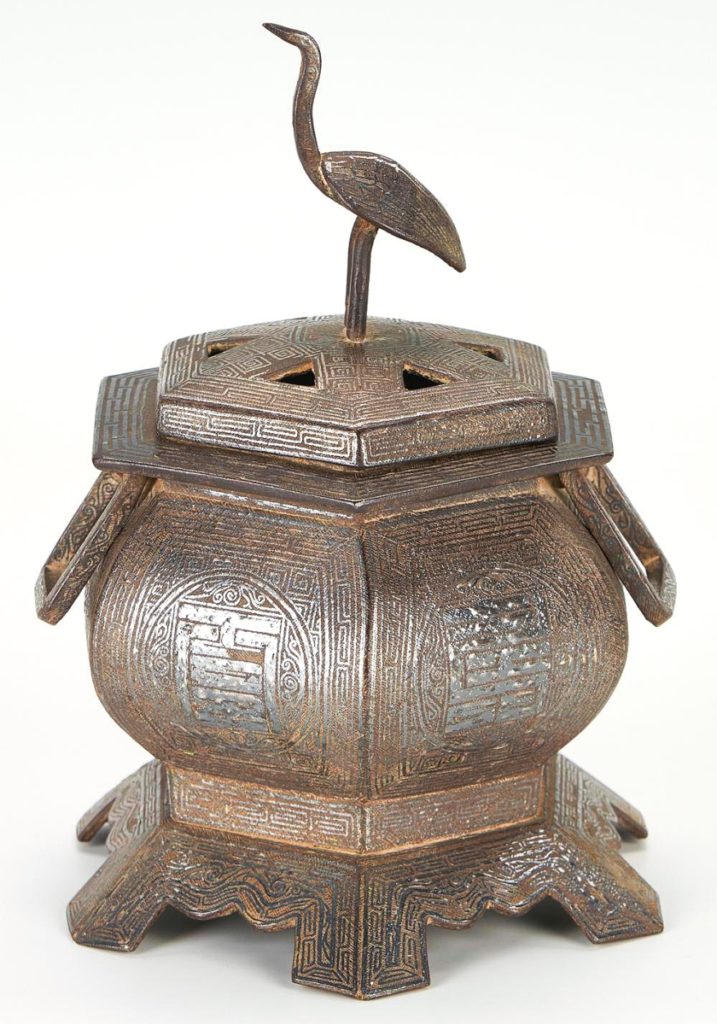
The second lot of the first day of the auctions was this early Nineteenth Century Korean Josean dynasty silver inlaid censer with crane finial, which flew to $37,500, more than 26 times its high estimate. It sold to an online bidder ($1/1,400).
A currently ongoing – through April 30 – exhibition at Louisville, Ky.’s Speed Art Museum on Helen LaFrance (1919-2020) has generated considerable interest in the artist, whose memory paintings document her rural and small-town experiences growing up in the Mayfield and Graves County areas of Western Kentucky. Case’s sale featured three of her works, with “Church Picnic” earning the most, selling to a Kentucky private collector for $24,400, a price Drury acknowledged was a new world auction record for the artist. “Moving Day” pulled off a result of $13,420, while her untitled painting of a crouching tiger finished at $2,400.
New world auction records for artists were also set for George Ayers Cress (Alabama / Tennessee, 1921-2008), whose “Shadowed Landscape” from 1963 earned $11,590 from a Tennessee collector. An oil on board floral still life by Sterling Strauser (Pennsylvania, 1907-1995) blossomed to $10,200 and went home with a Southern collector, bidding in the room.
Rounding out the top three prices at $39,040 was an early Nineteenth Century Wythe County, Va., paint-decorated blanket chest that had been discovered in an estate and owned by the same family since the late Nineteenth Century. The decoration, attributed to John Huddle (1772-1839) and family, featured the original red wash with grain-painted elements on the top and sides of the chest, which set off four rectangular lunette panels, the two on the top with red and black six-point stars, the two on the front with stylized flowers issuing from black urns. A Southern collector, bidding on the phone, faced stiff underbidding competition, but ultimately prevailed.
In addition to folk art furniture, high-style furniture also did well, particularly a Queen Anne high chest of drawers, attributed to Newport, R.I., or Boston, which came from the Memphis, Tenn., collection of John and Tina McWhorter, whose collection of early American furniture was well-known in Tennessee. Drury said it sold to a client from New England, bidding online, who was new to Case; she attributed the success of the lot to presale advertising in New England, including in this publication.
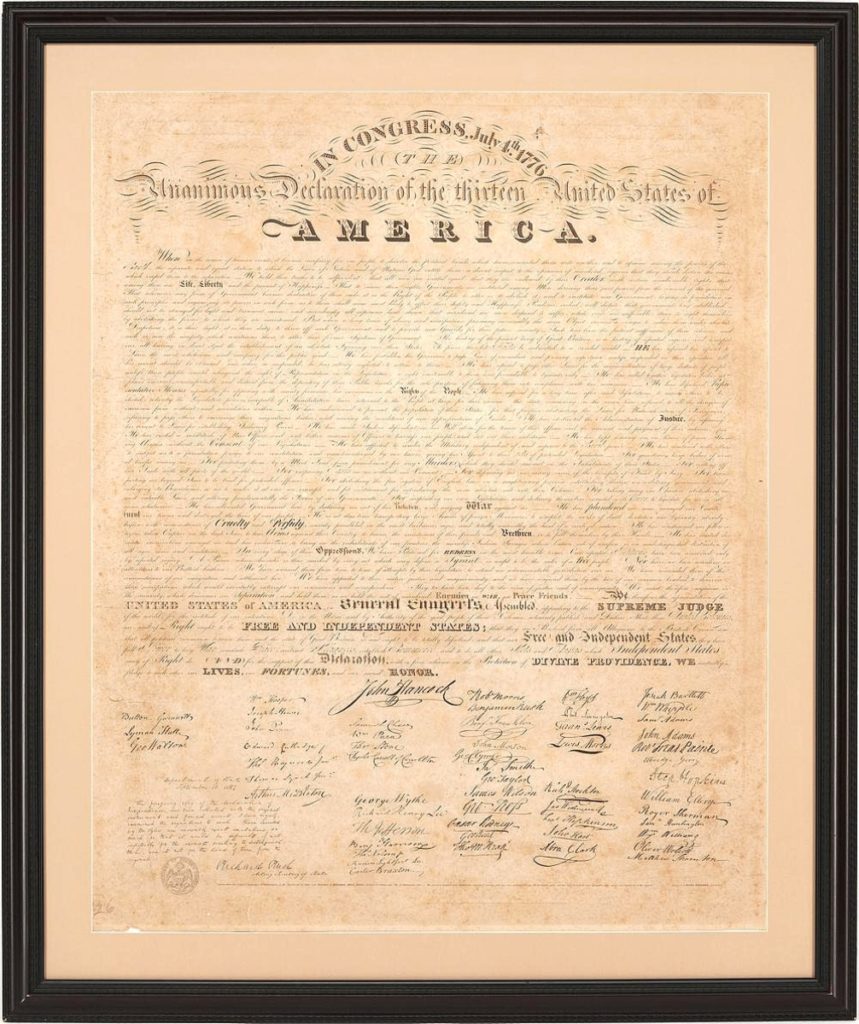
“That was a bit of a surprise. We had some good comparables but this exceeded even those despite some condition issues,” was Sarah Campbell Drury’s comment on the $20,400 realized by this 1818 copy of the Declaration of Independence, which came from a Thompson’s Station, Tenn., estate, that had originally been owned by penmanship professor Benjamin Owen Tyler, who had painstakingly copied the original signatures ($6/6,400).
The first day of the sale got off to a strong start with $37,500 achieved by a Korean Josean dynasty (1392-1897) silver inlaid censer with crane finial. Cataloged as likely from the Western province of Pyongan, early Nineteenth Century and with a silver wire inlaid Chinese “Shou” auspicious character marks, the 7-5/8-inch-tall censer had provenance to Samuel W. Lee & Co of Seoul and was being sold by a Tennessee religious institution. Drury said it had received institutional interest but that the buyer was an online bidder, so she was not certain if they were an institution, trade buyer or private collector.
Case has been selling works – both figural and more utilitarian works – by Outsider “Old Master” artist William Edmondson (American / Tennessee, 1874-1951) for years and sold to a private Southern collector, for $31,720, a carved limestone sculpture or garden ornament that had been estimated at $10/12,000. Exhibited in the Tennesee State Museum’s 1981 exhibition, “William Edmondson: A Retrospective,” the piece had been acquired by the Nashville, Tenn.’s seller’s parents directly from the artist in 1951.
“There was definitely interest and we had multiple bidders. It helped that it had been exhibited previously. It was deceptively simple, but if you saw the angles of the handle and sides, you could see Edmondson put a lot and effort into sculpting this. Though it was described as a garden ornament, we think it may have been more profound – it had the shape of a dipper, which was associated with plantation life,” Drury said.
One of the best stories of the auction was associated with an unusual circa 1899 Tiffany Studios lamp with Favrile shade that the sellers – who Drury said were loyal clients at Case – found in a tag sale and purchased for $140. It retained its original Favrile iridescent shade on a base both impressed “Tiffany Studios New York D436/7” and with the monogram for Tiffany Glass & Decorating Co. A collector on the West Coast bid it to $29,280.
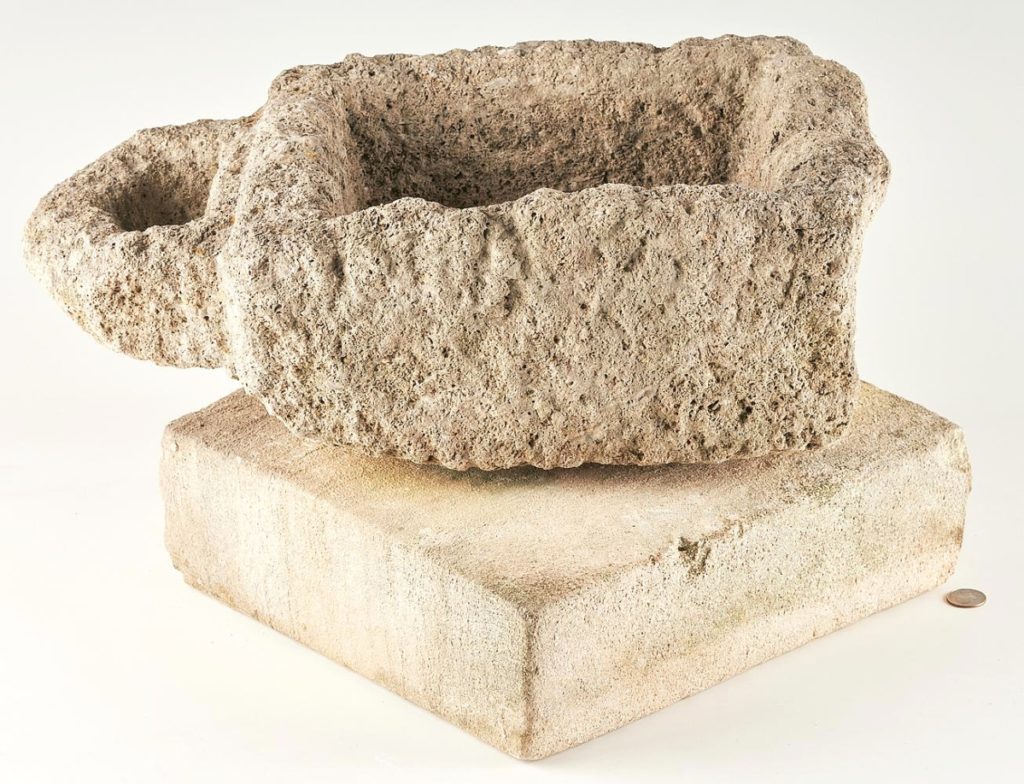
“It speaks to how this market has gone crazy,” said Sarah Campbell Drury, of this carved limestone sculpture and base by William Edmondson, which a private Southern collector bid to $31,720. The piece was acquired directly from the artist and included in a 1981 retrospective exhibition on the artist’s work ($10/12,000).
“We had so much interest in the paper lots; the books, documents and maps all did fantastically well. We have a very enthusiastic bidder base; it’s a key strength for us,” Drury shared. An example of this was the surprisingly high price of $20,400 realized for an 1818 copy of the Declaration of Independence, engraved by Peter Maverick, Newark, N.J., which is considered the first copy of the Declaration of Independence produced for commercial purposes, which had been owned by Benjamin Owen Tyler (1789-1855), a Massachusetts-born penmanship professor.
A map of North and South Carolina, by Henry Mouzon, published by Robert Sayer and John Bennett in London in 1775, rose to $14,640 and sold to a private collector outside of the South. The omission of both Fort Sullivan and the bar and harbor of Charlestown indicate that it was a rare first-state edition referenced in at least three books on early Southern maps.
An online buyer who Drury was not familiar with, and who may have been making their bidding and buying debut at Case, picked up several lots, including a one-page bifolium handwritten autographed letter written in 1864 by Confederate President, Jefferson F. Davis (1808-1889) to General Robert E. Lee (1807-1870). Written shortly after the May 5-7 Battle of the Wilderness, the letter commended Lee on his conduct during the event and requested an audience within two weeks. The letter was one of nearly three dozen lots from the Nashville estate of Stanley Horn, who was a collector of Tennessee and other Southern manuscripts, documents and ephemera.
Case Auctions’ next sale will take place July 8-9. For information, www.caseantiques.com or 865-558-3033.

















